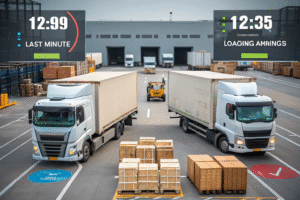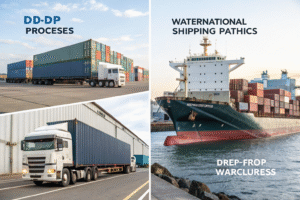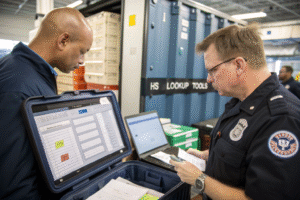Shipping costs can eat into your profits fast. Paying too much for freight, or having poor planning, means less money for your business growth.
At GeeseCargo, we focus on cost-efficient solutions that save you money by optimizing routes and consolidating shipments—without slowing your deliveries or risking damage.
Lower costs and fast delivery can go together when you have the right partner managing your logistics.
What Does Shipment Consolidation Mean for Your Costs?
Many buyers pay for small shipments separately, unaware that consolidation can cut costs significantly.
Shipment consolidation means combining multiple smaller shipments into one larger container or freight load, which reduces overall shipping charges.

How does consolidation reduce costs?
By grouping shipments, we reduce the number of containers or air freight pieces needed. This lowers port fees[^1], handling charges, and freight costs.
For example, instead of sending four separate 20kg parcels by air, we combine them into one 80kg shipment, saving the client over 30% on freight charges[^2].
Are there risks in shipment consolidation[^3]?
Consolidation requires precise planning and timing. If shipments arrive late or documents are incomplete, the entire consolidated shipment may be delayed.
We manage this risk by setting clear schedules with suppliers, verifying paperwork early, and using trusted agents to coordinate pickups and deliveries.
[^1]: Understanding the factors that affect port fees can help businesses make informed decisions and optimize their shipping costs.
[^2]: This link will offer strategies and tips for businesses looking to minimize their freight charges, ultimately improving their bottom line.
[^3]: Exploring this resource will provide insights into how shipment consolidation can enhance efficiency and reduce costs in logistics.
How Do We Optimize Shipping Routes for Savings?
Route optimization means choosing the best transport path to balance cost, speed, and reliability.
We analyze all options—ocean, air, rail, and road—and pick routes that lower your total landed cost without adding unnecessary transit time.

What factors influence route optimization[^4]?
Key factors include:
- Transit time requirements
- Freight cost differences
- Port congestion and customs clearance speed
- Seasonality and carrier schedules
For example, when the U.S. West Coast ports get congested, we may route shipments through Gulf Coast ports like Houston, which often saves days and fees.
How does GeeseCargo keep routes flexible?
We monitor port and carrier status daily. If a delay or strike is expected, we reroute shipments before they leave China.
This proactive approach helps our clients avoid demurrage fees and late deliveries.
[^4]: Exploring this resource will provide insights into effective strategies for optimizing routes, enhancing efficiency and cost savings.
How Do Safety and Cost Efficiency Work Together?
Cutting costs shouldn’t mean cutting corners. We maintain strict safety standards while reducing expenses.
Our experienced team inspects packaging, monitors container conditions, and works only with certified carriers to ensure your goods arrive safely.

What safety measures are in place during consolidation?
Consolidated shipments require careful packaging and labeling[^5] to prevent damage or mix-ups.
We train suppliers on best packing practices and supervise loading. Our agents inspect containers to confirm secure stowage[^6] and proper documentation.
Can cost efficiency affect insurance or claims?
Sometimes cheaper routes or carriers have higher risk. We balance this by choosing providers with good track records and proper insurance[^7].
If damage happens, we handle claims fast to protect your interests.
[^5]: Explore this link to learn about effective packaging techniques that ensure safety and prevent damage during shipping.
[^6]: Discover essential practices for secure stowage to minimize risks and ensure safe transport of goods.
[^7]: Understanding the role of proper insurance can help you make informed decisions about risk management in shipping.
How Can You Start Saving with GeeseCargo’s Cost-Efficient Solutions?
Saving costs starts with clear communication. Tell us your priorities and volume, and we’ll craft a tailored plan.
We provide transparent quotes that highlight consolidation opportunities and route options—so you can choose what fits your budget and timeline best.

How do we identify the best consolidation opportunities[^8]?
We analyze your order patterns and factory locations. If you have multiple shipments going to the same destination within a short time, we consolidate them.
We also combine clients’ shipments when possible to maximize container space and reduce costs.
What technology supports our cost optimization[^9]?
We use shipment management software[^10] that tracks cargo from factory to delivery, flags consolidation chances, and compares route costs automatically.
This helps us keep prices competitive and avoid surprises.
[^8]: Exploring this resource will provide insights into effective strategies for optimizing shipping costs through consolidation.
[^9]: Discovering best practices in logistics can significantly improve your cost management and operational efficiency.
[^10]: This link will help you understand how shipment management software can enhance efficiency and reduce shipping costs.
Conclusion
Cost-efficient shipping doesn’t mean slow or risky freight. With GeeseCargo’s route optimization and shipment consolidation, you get the best price without losing speed or safety. Partner with us to keep your logistics lean and reliable.









